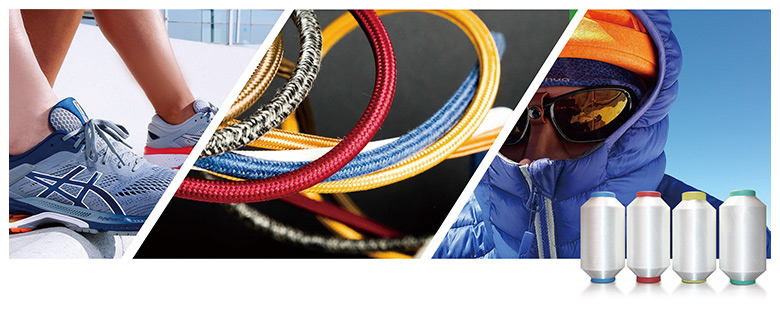- Xielong nylon thermal fuse has been deeply engaged in the fields of shoe materials, clothing, and high-end industries
- The Shengze Fabric 10,000-Mile Journey event was successfully held in Nanjing
- The International Nylon Innovation Summit will grandly open at Shangkai
- Polyester thermal fuse: The shining star of innovative textile technology
- Inject innovative impetus into the shoe and garment enterprises in Jinjiang
- Explore the application value of nylon thermal fuse in TPU fly-woven shoe uppers

- Contact: Mr. Jin +86 15805011538
- Email: xmzx333@163.com
- Web: www.xlfiber.com
- Add: 85 Jinghua Avenue, Xiyuan Industrial Park, Zhangping City, Fujian
Recently, the 15th China International Aviation and Aerospace Exhibition was held in Zhuhai. Unprecedented major scientific and technological achievements such as "stealth fighter jets" made a stunning debut, and China's strength in pursuing its dreams in the sky has amazed the world. But perhaps many people don't know that among these aerospace technologies, there are actually a large number of textile black technologies hidden!
Build new combat effectiveness with new productivity
When it comes to textiles, many people's first associations are daily necessities such as clothes and quilts.
In fact, modern textiles can be used both underground and in the sky. They have long transcended the daily application scope of clothing and bedding and have become a basic industrial category covering all walks of life for the nation. They have also played a huge role in promoting the progress of aerospace.
So, what are the textile black technologies in the aerospace field? Let's reveal them one by one
Stealth aircraft absorbing materials
The two stealth fighter jets, the J-20 and J-35A, which were heavily displayed at this air show, have attracted the attention of military enthusiasts.
One of the key technologies for achieving "invisibility" in stealth aircraft is the application of absorbing materials (RAM), which can effectively absorb some radar waves and convert them into thermal energy or other forms of energy, thereby reducing the reflection of radar waves.
The manufacturing process of absorbing materials is complex, and their composition mainly consists of two parts: the absorbent and the absorption carrier. Commonly used absorption carriers, such as carbon fiber, glass fiber and polyimide, are all made by relying on the exquisite craftsmanship of modern textile technology.
The textile industry's profound accumulation in optimizing the mechanical and electrical properties of fibers, as well as in coating technology and composite material manufacturing technology, has played a crucial role in enhancing the performance of absorbing materials.
2. Aircraft shell materials
The outer shell of the aircraft is largely made by weaving and compounding reinforced carbon fiber composite materials and other textile materials. These materials are characterized by being lightweight and having high strength, which can effectively reduce the weight of aircraft and improve flight efficiency.
3. Parachutes and flight suits
Special textiles are used to make parachutes and pilots' flight suits. These materials need to have high strength, light weight, wear resistance and specific aerodynamic properties, which can stabilize the attitude of spacecraft during high-speed descent and slow down the descent speed to ensure a safe landing.
4. Specialized flexible solar panels
Flexible solar panels are a type of thin-film solar cell, featuring advanced technology, excellent performance and low cost. They are widely used in unmanned aerial vehicles and small spacecraft.
Flexible solar panels usually select some textile polymers, fibers and yarns with good flexibility and durability as materials, and are made by weaving, knitting or nonweaving techniques and processes.
5. Communication equipment such as antennas
Textile materials are also used to manufacture communication equipment such as antennas for spacecraft. These devices are made of special fiber materials, featuring light weight, high strength and excellent electromagnetic performance, which can ensure smooth communication of spacecraft in the space environment.
6. Composite material manufacturing
Composite materials are composed of fibers and resins and are widely used in structural components of aircraft and spacecraft. Textile technology is used in this process to manufacture preforms, such as three-dimensional weaving, weaving, knitting and sewing techniques, which can produce composite materials with specific shapes and properties.
7. Heat insulation and heat preservation materials
When spacecraft re-enter the atmosphere, high-performance thermal insulation materials are needed to protect the aircraft from high-temperature damage. Textile technology plays a crucial role in manufacturing lightweight but high-temperature resistant thermal insulation materials.
8. Weaving and knitting techniques
It is used for manufacturing seats, interiors, airbags and other internal components of aircraft.
9. Noise and vibration control
Textile materials are used to absorb and reduce noise and vibration inside aircraft.
10. Smart clothing
Textiles can integrate sensors, conductive fibers and other high-tech elements for monitoring, communication and control.
Declaration: The content and template of this article are compiled from the Internet and the copyright belongs to the original author. If there is any infringement, please inform us in time and contact us for deletion.
- The Shengze Fabric 10,000-Mile Journey event was successfully held in Nanjing
- Xielong nylon thermal fuse has been deeply engaged in the fields of shoe materials, cloth
- The International Nylon Innovation Summit will grandly open at Shangkai
- Polyester thermal fuse: The shining star of innovative textile technology
- Inject innovative impetus into the shoe and garment enterprises in Jinjiang
- Explore the application value of nylon thermal fuse in TPU fly-woven shoe uppers
- The 2025 Autumn Keqiao Curtain Fabric Exhibition has come to a successful conclusion!
- Unlock the unique properties of nylon hot thermal fuses and open up new possibilities for
- The 2025 Annual Conference of the Spandex Branch of China Chemical Fiber Industry Associat
- Xielong Chemical Fiber: An outstanding producer in the field of nylon thermal fuse

